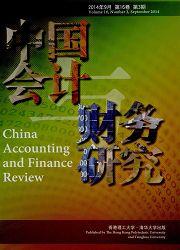Organization capital and firm risks
引用次数: 0
Abstract
PurposeThis paper aims to investigate how organization capital influences different forms of corporate risk. It also explores how the relationship between organization capital and risks varies in the cross-section of firms.Design/methodology/approachTo test the hypothesis, this study employs the ordinary least-squares (OLS) regression model using a large sample of the United States (US) data over the 1981–2019 period. It also uses an instrumental variable approach and an errors-in-variables panel regression approach to mitigate endogeneity problems.FindingsThe empirical results show that organization capital is positively related to both idiosyncratic risk and total risk but negatively related to systematic risk. The cross-sectional analysis shows that the positive relationship between organization capital and idiosyncratic risk is significantly more pronounced for the subsample of firms with high information asymmetry and human capital. Moreover, the negative relationship between organization capital and systematic risk is significantly more pronounced for firms with greater efficiency and firms facing higher industry- and economy-wide risks.Practical implicationsThe findings have important implications for investors and policymakers. For example, since organization capital increases idiosyncratic risk and total risk but reduces systematic risk, investors should take organization capital into account in portfolio formation and risk management. Moreover, the findings lend support to the argument on the recognition of intangible assets in financial statements. In particular, the study suggests that standard-setting bodies should consider corporate reporting frameworks to incorporate the disclosure of intangible assets into financial statements, particularly given the recent surge of corporate intangible assets and their critical impact on corporate risks.Originality/valueTo the best of the knowledge, this is the first study to adopt a large sample to provide systematic evidence on the relationship between organization capital and a wide range of risks at the firm level. The authors show that the effect of organization capital on firm risks differs remarkably depending on the kind of firm risk a particular risk measure captures. This study thus makes an original contribution to resolving competing views on the effect of organization capital on firm risks.组织资本与企业风险
目的研究组织资本如何影响不同形式的企业风险。它还探讨了组织资本和风险之间的关系如何在企业的横截面中变化。设计/方法/方法为了验证这一假设,本研究采用了普通最小二乘(OLS)回归模型,使用了1981年至2019年期间美国的大样本数据。它还使用工具变量法和变量误差面板回归法来缓解内生性问题。实证结果表明,组织资本与特质风险和总风险呈正相关,与系统风险呈负相关。横截面分析表明,在信息不对称性和人力资本较高的子样本中,组织资本与特质风险之间的正相关关系显著更为显著。此外,对于效率更高的企业和面临更高行业和经济风险的企业,组织资本与系统风险之间的负相关关系更为明显。实际意义研究结果对投资者和政策制定者具有重要意义。例如,由于组织资本增加了特殊风险和总风险,但降低了系统风险,投资者在投资组合形成和风险管理中应考虑组织资本。此外,研究结果支持了关于在财务报表中确认无形资产的论点。特别是,该研究建议,准则制定机构应考虑公司报告框架,将无形资产的披露纳入财务报表,特别是考虑到最近公司无形资产的激增及其对公司风险的关键影响。独创性/价值据所知,这是第一项采用大样本来提供关于组织资本与企业层面广泛风险之间关系的系统证据的研究。作者表明,组织资本对企业风险的影响因特定风险度量所捕获的企业风险类型而异。因此,本研究对解决关于组织资本对企业风险影响的竞争观点做出了独创性贡献。
本文章由计算机程序翻译,如有差异,请以英文原文为准。
求助全文
约1分钟内获得全文
求助全文

 求助内容:
求助内容: 应助结果提醒方式:
应助结果提醒方式:


